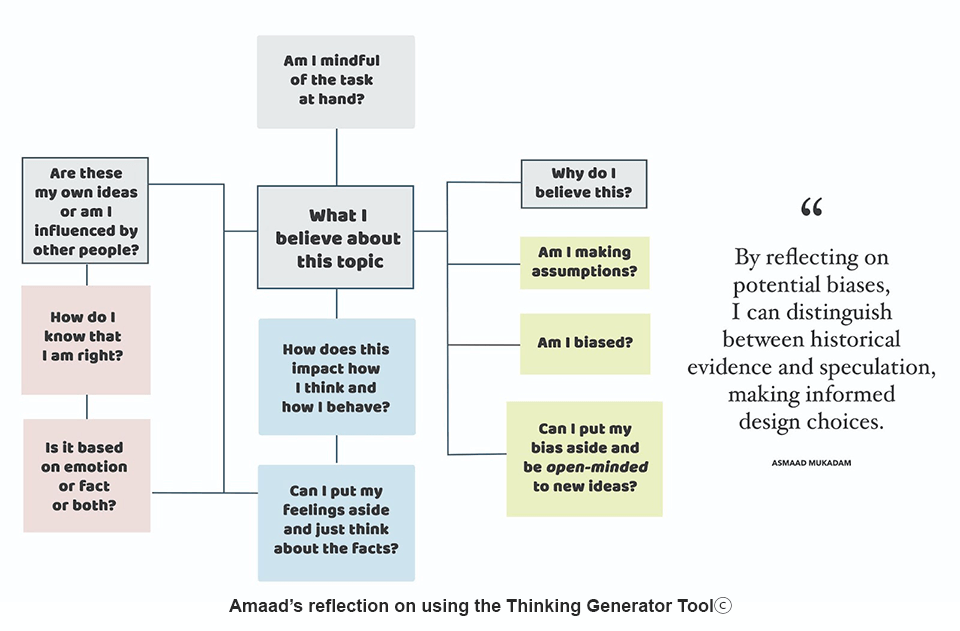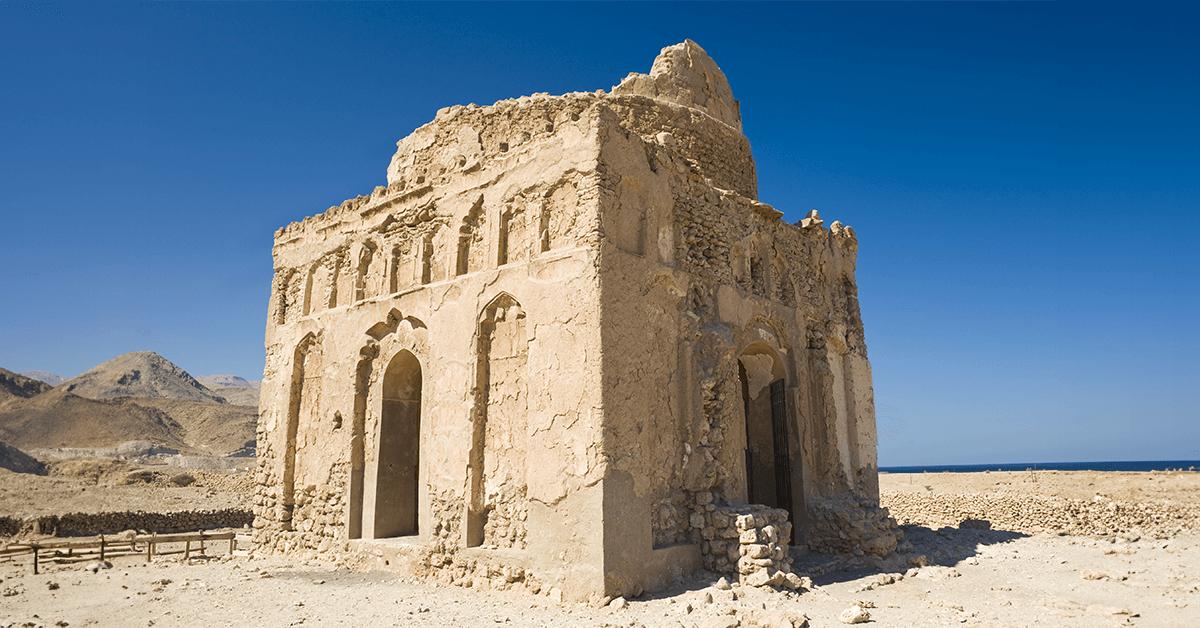April 30, 2025
We know that making connections between teaching and learning experiences and real world issues provides new opportunities and new stories for students, but lets not forget what making these connections can do for teachers. It helped us recently when we faced a challenge in our work practice. Introducing anything new to schools feels like additional work. A problem that we sometimes face when showing our thinking tools to administrators, is the perception that they will create more work for teachers — which is not the case. As we discussed how we could reframe these misconceptions, serendipitously we were contacted by a former Design student working in a new and exciting work situation.
Building Information Modeling (BIM)
Amaad Mukadam is an Architectural Trainee who uses Building Information Modeling (BIM). He is working on a UNESCO World Heritage project to digitally recreate the Ancient City of Qalhat, located on the east coast of the Sultanate of Oman (Middle East). Amaad is using BIM to visualise the deteriorating Ancient City of Qalhat. BIM are computer files that can be exchanged between collaborative groups who are working holistically on a project. They produce a digital representation of a building or other physical elements and aspects using structured, multi-disciplinary data to integrate planning, design, construction, and operations. Amaad used point cloud data and reality capture, where technologies such as LiDAR (Laser Scanning) and photogrammetry to convert physical site remnants into precise 3D models.
Making Connections
We are always interested to see how our Thinking Tools can be useful in a range of real world contexts. Amaad’s fascinating project seemed a brilliant opportunity to explore how a thinking tool could be used in the context of BIM and digital reconstruction. When Amaad reflected on his work practice using one of our thinking tools, we made a creative connection between this digital technology (real world context) and our thinking tools (teaching and learning). A connection we could use to communicate how our tools are not a burden, but a benefit.
Amaad used BIM to integrate scanned survey data to digitally reconstruct the existing architectural details and uploaded this to a 3D modeling software to use as a base structure. BIM was also used to facilitate the use of layered and archaeological data, combining archival maps and textual accounts to inform the reconstruction process. Amaad wasn’t creating a new city or site but plugging in new data and imagery. In the same way the visual thinking tools can be plugged into teachers’ existing content to build on the existing lesson plans. Amaad was extending and extrapolating on current information which then was manipulated into new material. Likewise our thinking tools provide ways to explore and extend existing content. Therefore teachers can input their existing content into the framework of the tool to generate inquiry and reflection through analyzing, evaluating, synthesizing and creating novel links.

“As I work on visualizing the heritage site in its fully constructed state with limited research and online information, the Thinking Generator Toolⓒ helps me stay critical and objective. It prompts me to question whether my assumptions are based on facts or influenced by external sources, ensuring that my reconstruction remains as accurate as possible. By reflecting on potential biases, I can distinguish between historical evidence and speculation, making informed design choices. It also encourages me to stay open-minded, considering multiple possibilities while maintaining the site’s historical integrity.”
Amaad concluded, “In this sense, BIM functions as an analytical and interpretive tool, much like the Thinking Generator Toolⓒ, aiding in the reconstruction of historical environments through imagination, critical inquiry, and multidisciplinary perspectives rather than relying solely on assumptions.”
How does making creative connections impact your work practice?
As educators we know that student learning is enhanced through making connections to real life experiences. Teachers’ curiosity may be piqued from hearing real life stories and educators might be interested in using the thinking tools themselves. In these times of budget cuts and constraints on the profession, the visual thinking tools may be some inspiring ways to alleviate stress for teacher planning and positive student engagement.
We know that teachers’ daily commitments can be overwhelming, but the addition of using appropriate thinking tools can simplify the presentation and delivery of concepts required to deliver curriculum objectives. BIM may not feel as relevant as BMI but the example of using thinking tools with BIM demonstrates how the Thinking Tools are not only valuable within the school context but are tools that students can take with them into real life situations. It is a fine example of school learning that translates into real life problem solving and means students will be able to make meaningful connections between their learning in the classroom and their life outside of school.
References
Harbord, M. J., & Khan, S. R. (2025). 21 visual thinking tools for the classroom: Developing real-world problem solvers in grades 5-10. Routledge Taylor & Francis Group.
Mukadam, A, (2025, February 10). [Personal interview by the author].Wikimedia Foundation. (2025, March 8). Building information modeling. Wikipedia. https://en.wikipedia.org/wiki/Building_information_modeling#

